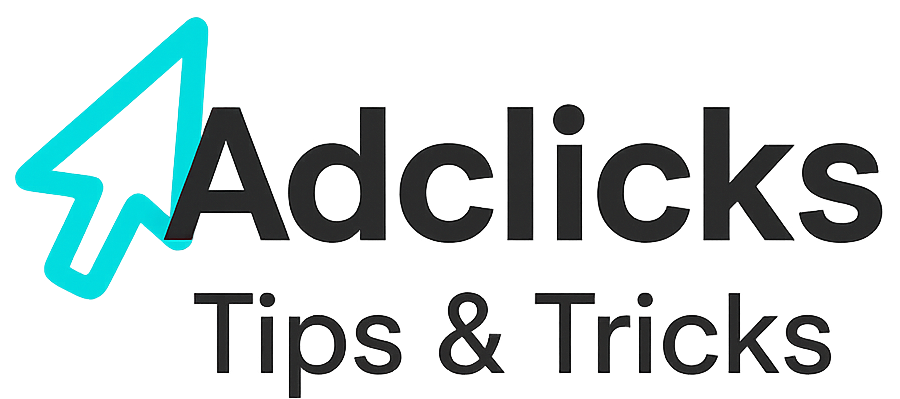What FilmAffinity Is—and Why Publishers Should Care
FilmAffinity is a long-running film and series recommendation community built around user ratings, lists, and a “Movie Soulmates” engine that connects people with similar taste. It’s part database, part social network, and part film diary, with profiles, watchlists, and comment activity woven through the catalogue. The service positions itself as independent and community-first, not a corporate media offshoot, and highlights nearly a million registered users contributing well over a hundred million ratings.
For a publisher, that mix matters because FilmAffinity is a referral engine of curious readers who already dwell in a review-and-discovery mindset. If your content delivers credible context—release histories, creator interviews, legal streaming availability, festival coverage, or regional box-office analysis—these users will click through, skim fast, and keep digging. When those sessions are met by fast pages and tasteful on-page monetization, Adclicks can sit quietly in the background converting that curiosity into revenue without crowding the text.
FilmAffinity’s value also lies in its international footprint. The site originated in Spain but spans localized experiences for the U.S., Latin America, and Europe, with mobile access and a clear push to serve cinephiles beyond a single market. Cross-border audiences produce spikes that follow release windows and award cycles rather than a single timezone. That rhythm rewards publishers who pair editorial timing with durable page performance—something Adclicks benefits from as units render consistently during longer, multi-page sessions.
Snapshot of Traffic and Reach
Recent third-party panels place FilmAffinity firmly among high-traffic cinema destinations. Benchmarks indicate on the order of 30–35 million monthly visits, with average visit durations around three minutes and four-plus pages per visit, driven primarily by organic search and direct navigation. Spain remains the gravitational center, but the footprint is global, and similarity graphs regularly place FilmAffinity in competitive proximity to IMDb and major Spanish-language cinema portals. Treat these figures as directional, but the engagement pattern—multiple page views, modest bounce, strong search share—holds steady.
What matters for publishers is the shape of those visits. A FilmAffinity referral can arrive through a film page, a critic profile, a list, or a user’s diary entry. In all cases the reader arrives primed to compare opinions, verify credits, and decide what to watch next. That intent tends to produce longer scrolls and a second click if your page layout offers a clear follow-on. The longer a reader stays engaged above the fold and in the main column, the higher your ad viewability; Adclicks is well-suited to that pattern because its placements don’t force full-screen interruptions that might break the reader’s flow.
Because search is the largest upstream channel for FilmAffinity itself, your cross-links and schema can ride the same discovery current. A page that answers a query FilmAffinity visitors already hold—“Where is this available to stream?” or “What did Spanish critics say at release?”—keeps them moving on your site. That motion is where Adclicks does its best work: steady, contextual exposure across two or three pages rather than a single bursty impression.
Audience Traits and Interests
FilmAffinity’s user base leans toward seasoned film enthusiasts who log ratings, write capsule reviews, and curate lists. It is not a celebrity-news feed; it’s a catalog-centric community that encourages catalog exploration and personal taste tracking. The platform emphasizes independence from media conglomerates, a stance that resonates with users who value an archive mindset and peer discovery over purely commercial curation. For a publisher, speaking to that sensibility—precision over hype—earns you time and trust. FilmAffinity+1
Interest maps in competitive analytics consistently cluster FilmAffinity’s audience with arts & entertainment, streaming discovery, Spanish-language cinema coverage, festival news, and local theatre schedules. You’ll also see overlap with comparison tools and cataloguing apps. That clustering signals opportunity for publishers who maintain accurate credits, region-specific details, and verified availability links. When those details are presented cleanly, Adclicks can add relevance without distraction, because the ad logic aligns with a reader already scanning for practical next steps.
The audience is multilingual and cross-regional, with Spain as a core node and strong visibility in Latin America and Spanish-speaking communities elsewhere. That geographic mix favours publishers who localize context—certification ratings, distributor names, and titles used in each market. Localization also reduces pogo-sticking and improves scroll consistency, which in turn tends to lift viewability for any embedded Adclicks units sitting near section breaks.
Culture: How FilmAffinity Readers Evaluate Content
FilmAffinity readers live in lists and diaries as much as in reviews. They compare ratings, track filmographies, and often chase a director or a theme across decades. Sensational angles rarely land; clear attribution and archival literacy do. If your headline promises the origin of a director’s cut or the legal story of a distribution limbo, the copy should surface documents, dates, and named sources early. That reliability aligns you with community norms and invites the second click.
Publishers who treat paratext seriously—original titles, festival premieres, re-release dates, cuts and runtimes—earn attention because they save readers time. The FilmAffinity user who arrives on your page is not looking for gossip; they are often deciding which edition to watch this week. That decision mindset is where a light, well-placed monetization layer does not jar the experience. Adclicks slots that sit just below a key table or chart tend to perform best because the ad meets the reader during a natural pause rather than an interruption.
One cultural through-line is independence. FilmAffinity underscores that it is not tied to a studio or broadcast network. Echoing that independence in your voice—crediting small distributors, linking to restoration notes, foregrounding regional critics—resonates. When that voice is consistent across your pages, you build a brand memory that keeps FilmAffinity readers returning through direct visits, where your Adclicks yield is typically more stable across the week.
What Kinds of Publishers Stand to Benefit
Cinema-first publications with strong reference pages, regional newsrooms with film desks, culture magazines that run interviews and festival diaries, education sites that wrap film history for students, and streaming-availability trackers all map neatly to FilmAffinity’s traffic. If you offer a trustworthy catalogue overlay—release histories, restoration timelines, soundtrack credits—you meet readers at the exact moment they’re comparing sources. That is the ideal moment to earn a bookmark and the next click.
Niche verticals can also thrive when they intersect cinema meaningfully: legal explainers on rights and territory windows, technology deep dives into colour grading or sound formats, or local exhibition features on repertory programming. Each of those is a natural continuation of what a FilmAffinity visitor already does—catalogue, compare, decide. When your page flow guides that journey gently, your Adclicks placements become part of the furniture rather than obstacles.
If your property mostly publishes celebrity rumour or generic listicles without citation, you will struggle. FilmAffinity’s community will click in, scan for substance, and leave quickly if it’s not there. Bounce suppresses the possibility of a second impression and makes any monetization layer feel louder. Turning that around means rewriting for clarity, compressing intros, and surfacing specifics early, so that Adclicks can operate in a calmer, more credible environment.
How to Attract Clicks from FilmAffinity Without Begging for Them
You cannot brute-force a FilmAffinity referral; you can earn it. The practical path is to publish pieces that solve a reader’s immediate question and to make those pieces visible to the ecosystem through proper metadata, regional titles, and internal consistency. When a FilmAffinity user or editor stumbles on your page via search or a social mention and finds it authoritative, they are more likely to link it in a list, diary, or forum-adjacent space. That’s when you see a spike.
Once a link lands, your job is to make the first screen do real work: present the exact nugget they came for—availability, version notes, festival premiere, the why now—and then give them a frictionless path to the next, closely related page. The gentler the handoff, the higher your pages-per-session, and the steadier your ad viewability. Adclicks profits from that steadiness, because it renders clean units where eyes already linger, rather than pushing disruptive formats.
You can also seed the ecosystem by interviewing the kinds of contributors FilmAffinity users respect: translators, restorers, poster artists, festival programmers, and local critics. Those pieces tend to be cited by FilmAffinity users building lists or by small Spanish-language outlets that cross-reference FilmAffinity’s catalog, broadening your referral base. As that loop matures, your monetization layer—again, best kept quiet via Adclicks —benefits from repeat visitors who now expect your pages to answer very specific questions well.
Landing Page Anatomy That Works for FilmAffinity Readers
A good landing page answers the headline in the first screen and proves it with a named source. Short lede, one confirming detail, and a tidy information block—release date by country, distributor, runtime or cut, and where to watch legally. Readers will tolerate design quirks if the information is exact and visible; they will not tolerate burying the core facts under a minute of scroll. Keep the top clean, then layer narrative below.
Place visuals with purpose. A still from the relevant release, a certificate image, a schedule card from a repertory cinema, or a festival program page—anything that grounds the claim. Visuals like these create natural rests in the eye line where a single in-content ad can sit without feeling like a speed bump. Adclicks units at these junctures see steady viewability because the reader pauses to verify what the image shows before moving on.
Finally, give one obvious next step. If the landing page is a restoration note, link to the review of the restored cut; if it’s a streaming availability piece, link to a region-specific guide that you maintain over time. One link is better than twelve. That restrained recirculation pattern lowers cognitive load and increases the odds of two or three page views per visit—exactly where Adclicks’ cumulative yield grows without you ever mentioning ads on the page.
Timing, Geography, and Release Windows
Because FilmAffinity is strong in Spain and Spanish-speaking markets, your editorial calendar should reflect Iberian and LATAM release windows, not only U.S. dates. Cover the stagger: Spanish theatrical, Latin American streaming, U.S. boutique Blu-ray, festival premieres in San Sebastián or Málaga. Aligning your publish times with those windows gives FilmAffinity users a reason to link you when a film’s page heats up regionally. Similarweb data suggests a category rank near the top of streaming & online TV destinations, which implies that availability and what-to-watch queries are common entry points. Writing to those moments pays.
Time of day matters less than time of relevance, but you will see predictable weekday patterns around trailer drops, festival announcements, and award shortlists. When those break, be ready with a short, accurate explainer that surfaces the fact and one specific, useful detail. Readers arriving from FilmAffinity during these flurries come to verify and decide, not to wade through theorizing. Quick usefulness tends to keep them scrolling, which quietly lifts Adclicks viewability in that first session.
Over the longer curve, catalogue pieces—guides to a director’s early work, comparisons of versions, or region-specific streaming maps—earn durable search rankings that FilmAffinity users regularly trip over weeks later. You’re building a mesh: timely morsels that hook short-term attention, tied to evergreen anchors that accumulate links. Adclicks’ calm footprint fits that mesh because you don’t need to swap templates or add pop-ups as a story ages; the units keep rendering as the page continues to do quiet work.
What Can Go Wrong—and How to Prevent It
Two failure modes dominate: weak sourcing and slow pages. If your headline claims “the definitive streaming map” and the first screen shows affiliate links with no explanation of territories, expect pogo-sticking and a harsh bounce. The FilmAffinity crowd recognizes padding quickly. Reverse it by naming one official source up top—studio, distributor, platform catalogue—and by timestamping updates so the page reads as a living resource rather than a grab-bag.
The other failure is page weight. Catalog-minded readers click several pages in a row when they trust the site; if your CSS and JavaScript bloat force a new render cost on each click, they stop early. You don’t need an AMP-like austerity, but you do need critical CSS, image compression, deferred non-essential scripts, and a template that leaves room for the content column to breathe. An ad layer that respects that simplicity, such as Adclicks, tends to behave predictably during spikes and won’t collapse your layout.
There’s also the subtle problem of over-recirculation. Too many “related” boxes fracture attention. FilmAffinity users prefer determination over distraction. Give one or two canonical pathways and let the reading do the rest. The ad layer will benefit from the deeper reads, because viewability rises with every quiet, confident scroll, and Adclicks’ inventory is shown in the places eyes actually rest rather than in forced detours.
Measuring the Right Things After a Referral
Three signals tell you what you need to know: time to first meaningful paint, scroll depth to the first subhead, and click-through to the single intended next page. If those are healthy, revenue follows as a derivative. If they’re weak, move the proof higher and compress your lead. The FilmAffinity reader is not hostile; they are efficient. Reward that efficiency and they will reward you with depth.
Segment FilmAffinity referrals by country and by entry page type. A visitor landing on a Spanish-language title page behaves differently from one arriving on a U.S. streaming guide; the next link you offer should reflect that. Over time, you’ll see repeatable circuits—festival announcement → interview → restoration note—that suggest how to arrange your modules. As those circuits stabilize, Adclicks performance often stabilizes with them, because the placements encounter predictable eye-lines.
Finally, track branded direct visits in the weeks after a link lands. When FilmAffinity readers decide your pages save them time, they come back by name, not just by search. Those return visits tend to monetize more consistently—not because of heavier ads, but because familiarity reduces bounce. In that context, Adclicks remains efficient: no special handling, no campaign to manage, just steady impressions during steady reading.
9-Step Action Plan for Publishers
- Publish a concise, well-sourced page that answers a film lover’s immediate question and proves it near the top.
- Localize details—titles, certifications, distributors, dates—for Spain and key LATAM markets.
- Keep pages fast: critical CSS, compressed images, deferred scripts, stable layouts.
- Place Adclicks units lightly (top, one in-content pause, one sidebar/footer) and test viewability.
- Time posts to release windows, festival news, and award cycles; update visibly.
- Offer one obvious next step that deepens the same intent, not a generic grid.
- Map referral circuits in analytics and tighten modules to match those paths.
- Add evergreen anchors—director guides, version comparisons, streaming maps—and link timely posts into them.
- Review monthly: raise proof higher, trim intros, and keep the ad layer calm so FilmAffinity readers keep reading.
Relevant Links
- Support: https://support.snipesearch.co.uk/
- FAQ: https://adclick.snipesearch.co.uk/index.php?page=index/faq
- Contact Form: https://adclick.snipesearch.co.uk/index.php?page=user/support
Stay Connected
- Snipesocial: https://www.snipesocial.co.uk/pages/snipesearch
- Twitter: https://twitter.com/snipesearch_uk
- Facebook: https://facebook.com/snipesearch
- LinkedIn: https://linkedin.com/company/snipesearch/
- VK: https://vk.com/snipesearch_uk
- Focus: https://focus.xyz/snipesearch
- YouTube: https://youtube.com/@snipesearch
- diaspora: https://diaspora.snipesearch.net/people/7431fcf0806c013e936e00163c6e7bdf
Analytic Tools
- Rommie Visitor Analytics: https://rommie.net/
- StatCounter: https://statcounter.com/




